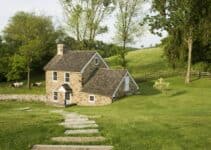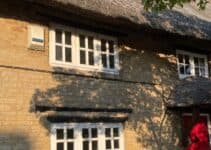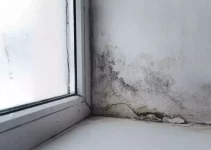Stone cottages look delightfully picturesque on postcards and chocolate boxes. But like all older buildings, they require a great deal of upkeep if you want to live in one comfortably.
Stone buildings, even very old ones, can be dry and warm but they can suffer from damp if they were built hastily, have been poorly maintained or the maintenance has been carried out incorrectly.
Prevention is better than a cure in all things and stone cottage maintenance is no different. With that in mind, we have some tips on how to damp-proof your stone cottage. We’ve also got some advice on how to deal with damp if your prevention hasn’t gone as planned.
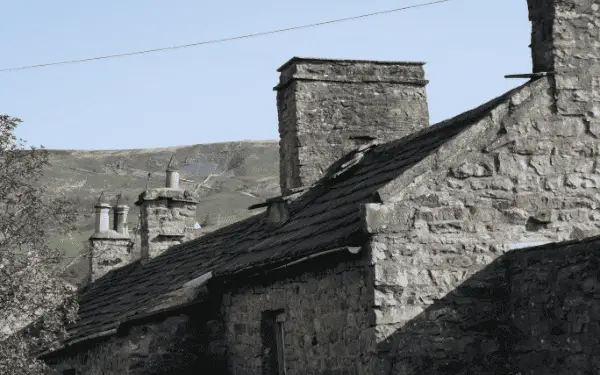
How Do You Stop Damp in a Stone Cottage?
The easiest and cheapest way of damp proofing a stone cottage is through ventilation. The incidental moisture that is created by cooking, taking a bath, and other normal domestic activities that expel moisture into the air needs to have free passage through your home and be drawn out.
Stone walls will also hold moisture. Cold air from outside will draw the warmer air inside to the wall and into its internal facing.
Wet walls are often a problem for older stone cottages that haven’t got a damp proof course or those where the internal finish has been conducted unsympathetically.
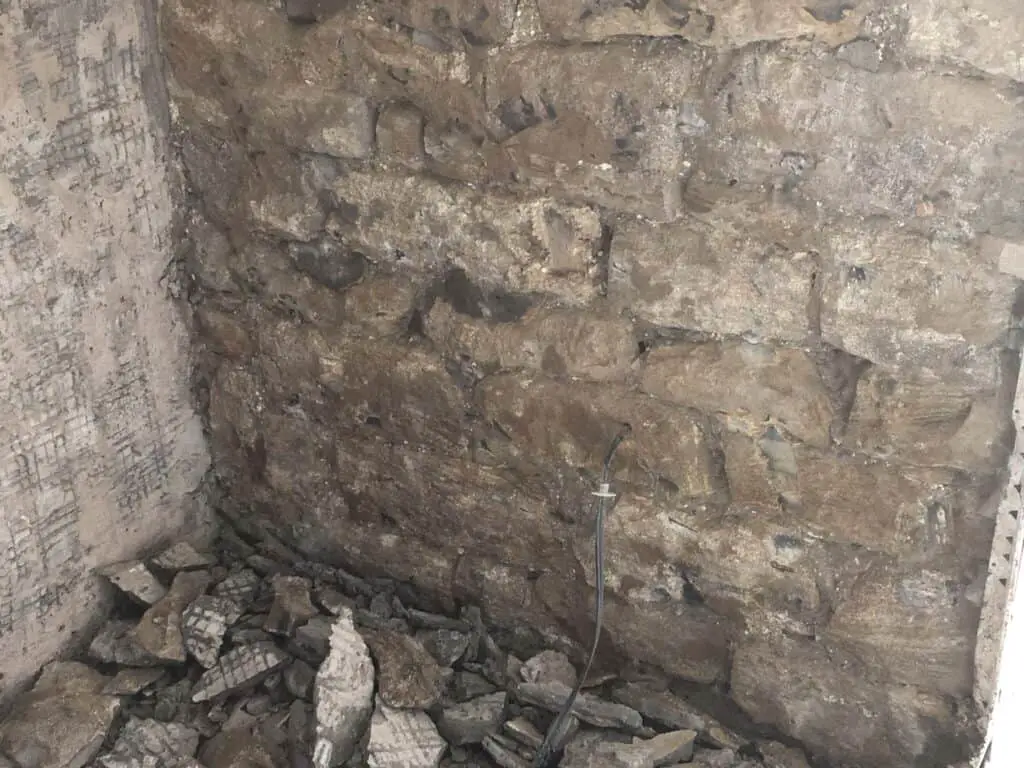
Do a Ventilation Check
Before you start taking drastic action, check your ventilation. If your airflow is good and your stone walls are dry and able to breathe then damp may not even become a problem.
Although it’s always a good idea to make sure it doesn’t become one.
Check how the air is allowed to flow through your home. Is it through vents, weep holes, through breathable mortar or are your windows and doors regularly open? Basically, how does your home leak air?
Of course, relying on the natural ‘leakage’ of your home isn’t the most environmentally-friendly method of ventilation but it is the most natural.
It’s also probably what your stone cottage has relied on for ventilation through the centuries that it has been standing if it is an older property.
Ventilation Solutions to Promote Air Flow
Having suitable vents is important for stone homes. So let’s take a closer look at some of your options:
Cast stone gable vents
Cast stone vents work in certain stone cottages. They are most likely to be found with a smooth finish so if your cottage doesn’t already have one they might not suit the style or listing of your cottage.
I like these gable vents as they are plain in colour and subtle:
However, they are an excellent choice if the stonework of your cottage is smooth or if you’re after a contrasting aesthetic.
Air bricks
Air bricks or grills are not a wholly modern invention. This type of ventilation has been employed for centuries either through the use of fired air bricks or as cast iron grills.
I like these air bricks for stone cottages as they blend in well with their dark colour:
Period bricks and grills can be bought at reclamation yards or you can buy decorative (or plain) versions if your stone cottage needs venting or you plan to instal them in a new build.
Weep holes
Weep holes are something better left to a mason. These holes are the small gaps that are left between stones during the construction process of your walls.
If your stone cottage isn’t constructed with weep holes, retrofitting them would require significant reconstruction.
In addition to this, even small weep holes are large enough to allow insects and other pests to enter your home and create more problems than the existing damp.
Not only this but older weep holes are not always up to the job of allowing enough moisture produced by modern homes to escape – an additional source of ventilation may be needed.
Extractor Fans
Extractor fans are an obvious option and any reputable builder will be able to install them. But this option is not always suitable for stone buildings with thicker walls. Here, window fans might be your answer.
Something cheap and cheerful like this will do the trick:
Bathrooms and utility rooms produce the most moisture in homes, so consider adding a window extractor fan to help aid the moisture flow out of your home where it needs it the most.
Check the Finish of Internal and External Walls
Check if your stone walls are wet or see if moisture is trying to wick in or out in places. It might appear as dark patches between the stones and the mortar, or the mortar itself may be crumbly and damp.
If this is the case, check the finish on your stone wall. If either internal or external walls have been painted with masonry paint or have cement mortar then that’s the likely cause of the problem.
To solve it, the unsuitable finish will have to be removed and replaced with a sympathetic treatment.
However, before the new finish is applied, it’s important to let all the moisture that has built up in the stone and the old mortar evaporate before applying the new finish. This can take weeks to months.
A lime-based mortar is going to be the most sympathetic choice to replace cement mortar as this would probably have been used in the original construction of most older stone cottages.
However, if your stone cottage has been built more recently, cement mortar may have been the original choice. Here a range of cement mortar mixes may allow far greater ventilation of the stone
As for painted finishes on stone walls, avoid or remove ordinary masonry paints, in fact, any acrylic-based paints, as they will only trap moisture.
Opt for breathable paints, I like using this from Dulux:
Using Drainage to Manage Damp In A Stone Cottage
Look carefully at the topography of the area surrounding your stone cottage. When it was built, water, whether free-flowing or standing, would have been managed to avoid damp entering the property and the same applies today.
Especially as many older stone cottages were often built without a damp proof course.
The drainage around your property needs to be carefully considered and maintained. See where water collects and move it away from your home through drainage pipes, French drains or other water management systems.
Landscaping your garden by reducing external ground levels may also be an option.
The same rule applies to water collected around the house in guttering and downpipes. Make sure these are well maintained and the water can flow freely through your drainage and is not allowed to stand on or around your stone walls, especially at the base.
Most stone is porous and will absorb water that is allowed to stand around its base.
Maintain your roof and Your Chimney to Control Damp
Rooves create an overhang that helps move water away from the base of your stone walls. If your stone cottage is thatched then it may need some attention or re-thatching. If you have a tiled or slate roof then check it is watertight and there is no water ingress.
Another area that can create a problem with all older properties is decay to the chimney and particularly flashing that may be coming to the end of its working life. Replacing this will stop moisture from easily entering your home and creating pockets of damp.
Can You Get Rising Damp in a Stone Cottage?
Most building stone is porous to some degree and unless your stone cottage was built in marble, your walls will absorb groundwater. This unfortunately means, yes, you can get rising damp in a stone cottage.
If you can’t feel any moisture internally, your damp problem may be more obvious from salt that comes up through the water and might build up on your walls. You may also find evidence of wet rot in surrounding timber.
Options for A Damp Proof Course (DPC)
Older properties used different construction methods and modern lifestyles have changed which creates more moisture in our homes.
Retrofitting a DPC would mean reconstruction and would be hugely expensive not to say impossible if your property is listed. But there are still some options.
Chemical Injection DPC – Hiring a professional to inject a chemical DPC into the masonry is one option.
This is the injection I recommend if you want to do it yourself:
Make sure to hire a respected professional, though, or an unsuitable or incorrectly installed chemical DPC can worsen your problems.
Magnetic DPC – An non-invasive method of damp proofing is through investing in a magnetic damp proof course like this:
This relatively new technology is based on the knowledge that humidity movement creates an electrical charge which assists a capillary action of water ingress and the surface retention of it.
By deploying the magnetic system, the capillary action is interfered with allowing the evaporation of the water and the increase in the breathability of the stone.
If you do notice an existing damp proof course in your property you may want to check that it hasn’t been bridged. Eradicating a bridge by replacing your broken DPC is a good start.
Can You Waterproof Stone Walls?
The long answer is: to be careful; the short answer is: yes.
Aside from other structural concerns, many owners of stone cottages are equally concerned about aesthetics. Getting the right treatment for your home should not interfere with the integrity of the structure or its history.
Having said that, modern methods can support the longevity of a period home. Breathable damp proofing, such as StormDry:
Masonry Cream can halt penetrating damp and help preserve the building for a number of decades.
What To Do If Water Is Coming Through Walls When It Rains
The key here is to not panic. Moisture ingress and egress have been a constant issue for your stone cottage for many centuries if it is an older property. Leaks can almost always be fixed.
If your walls are leaking during downpours you can apply the checks we have discussed throughout the article. But in brief:
Check first that it is not condensation! Then check for gaps in the stonework or cracks in the stone due to weathering or damage. Even a small gap can allow water to pass into any internal cavities in older mortar and spread through different areas of the wall.
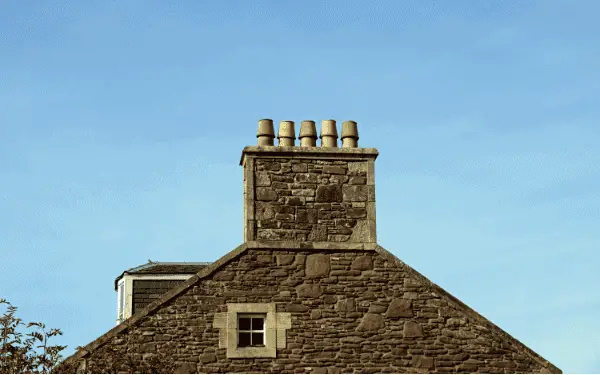
The most likely culprit, however, will be damaged or deteriorating mortar. Check for holes in the mortar or crumbling mortar between the stones of the exterior wall. Check for cracks in your plaster if your stone walls are rendered too.
If you find mortar is crumbling or there are cracks or damage, you’ll need to replace it – after letting your stonework dry out, of course.
Damp can be a problem for many homes and owning any older property whether it is made of cob, brick or stone is going to be an ongoing commitment. But the benefits of living in a beautiful stone cottage surely far outweigh the difficulties.
![10.5"w X 10.5"h Gable Vents, Hon&Guan Aluminum Alloy Wall Vents Attic Vents for Houses Door Vents for Exterior Doors [Outer Dimensions: 12”x 12”h].](https://m.media-amazon.com/images/I/3130DOBVpTL._SL500_.jpg)






